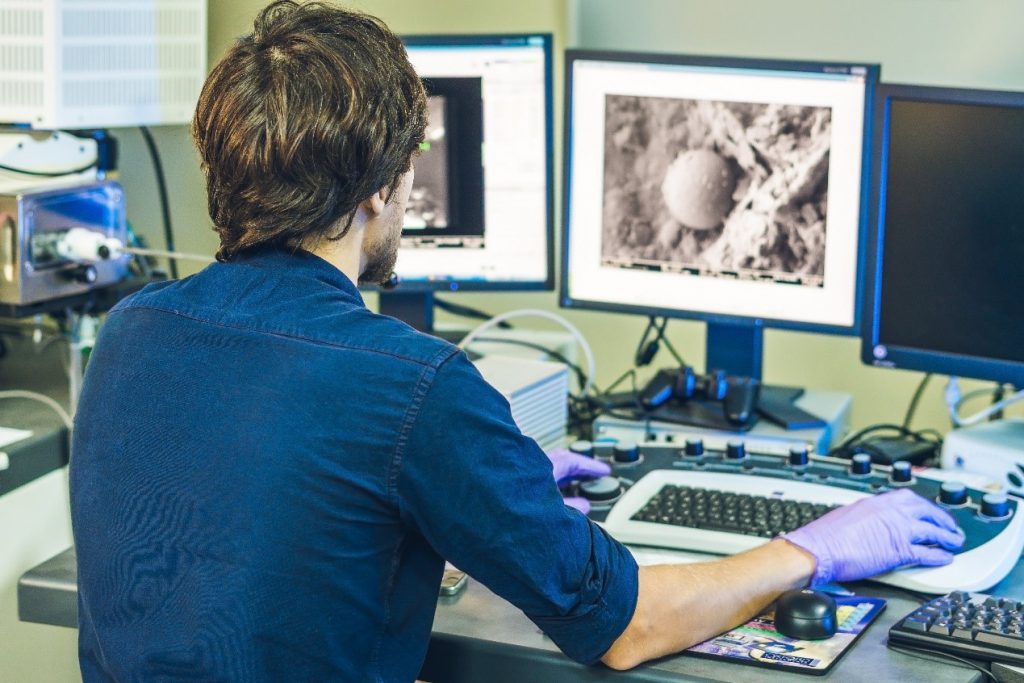
Iron oxide nanoparticles have high stability, good dispersion, simple preparation and good biocompatibility. They have shown a wide range of application prospects in the fields of sensor detection, disease diagnosis, gene therapy vectors, and targeted drug delivery. Recently, a research team has made progress in the use of hypoxia-assembled ultra-small iron oxide nanoparticles to amplify the fluorescence and magnetic resonance imaging signals of tumors. Relevant research results titled Hypoxia-Triggered Self-Assembly of Ultrasmall Iron Oxide Nanoparticles to Amplify the Imaging Signal of a Tumor are available on Journal of the American Chemical Society.
Hypoxia is common in solid tumors and has an important impact on tumor occurrence, development, metastasis, and treatment tolerance. It can be used as a separate indicator of treatment prognosis. Therefore, predicting and evaluating the degree of hypoxia in tumor patients plays an important role in the evaluation of treatment effects and the choice of treatment methods. However, the hypoxic zone is located in the tumor far away from the blood vessel. Traditional contrast agents are not easy to enrich and stay in this area for a long time, which creates obstacles to the imaging of this area. This phenomenon puts forward higher design requirements for the permeability of nano-contrast materials.
In this study, the researchers developed a novel hypoxia imaging probe, consisting of a hypoxia-triggered self-assembling ultrasmall iron oxide (UIO) nanoparticle and assembly-responding fluorescence dyes (NBD), to provide dual-mode imaging in vivo. And the team employed nitroimidazole derivatives as the hypoxia-sensitive moiety to construct intermolecular cross-linking of UIO nanoparticles under hypoxia, which irreversibly forms larger nanoparticle assemblies. The hypoxia-triggered performance of UIO self-assembly not only amplifies its T2-weighted MRI signal but also promotes the fluorescence intensity of NBD through its emerging hydrophobic environment incorporated into self-assemblies. In vivo results further confirm that our hypoxic imaging probe can display a prompt MRI signal for the tumor interior region, and its signal enhancement performs a long-term effective feature and gradually reaches 3.69 times amplification. Simultaneously, this probe also exhibits obvious green fluorescence in the hypoxic region of tumor sections.
Accordingly, the researcher also has developed an MRI difference value method to visualize the 3D distribution and describe the extent of the hypoxic tumor region within the whole body of mice. Due to its notable efficiency of penetration and accumulation inside a hypoxic tumor, the hypoxia imaging probe could also be considered as a potential candidate as a versatile platform for hypoxia-targeted drug delivery, and meanwhile its hypoxia-related therapeutic efficacy can be monitored.
About the author CD Bioparticles is committed to providing a large and increasing portfolio of magnetic nanoparticles to meet any research needs. We now offer a series of Iron Oxide Nanorods (non-magnetic) with rod-shaped structure to meet our customers’ multiple requirements. These iron oxide nanorods have strong light resistance, and are non-toxic, tasteless, insoluble in alkali and slightly soluble in acid, and can be widely used in coatings, plastics, paints and pharmaceutical fields.
Reference
Zhou, H., Guo, M., Li, J., Qin, F., Wang, Y., Liu, T., … & Chen, C. (2021). Hypoxia-Triggered Self-Assembly of Ultrasmall Iron Oxide Nanoparticles to Amplify the Imaging Signal of a Tumor. Journal of the American Chemical Society, 143(4), 1846-1853.
